Evaluating eel restocking actions in River Modego
Experimental restocking actions with young individuals of European eel (glass eel) are being implemented in one of the main tributaries of the Mondego river basin, the River Ceira, located upstream of Coimbra Açude-Ponte dam. River Ceira is one of the most fragmented watercourses of Mondego basin, with more than 20 low head weirs in the first 40 km, contributing to a severe and progressive decline of eels in the upstream reaches.
The river stretch selected for the restocking actions with glass eels is located 45 km upstream from the River Ceira mouth, above the first unsurmountable obstacle, the Cortecega weir, near the municipality of Cortecega (Gois). The selected reach was chosen based on the absence of eel specimens, probably due to the accumulated fragmentation effects from the downstream set of weirs.
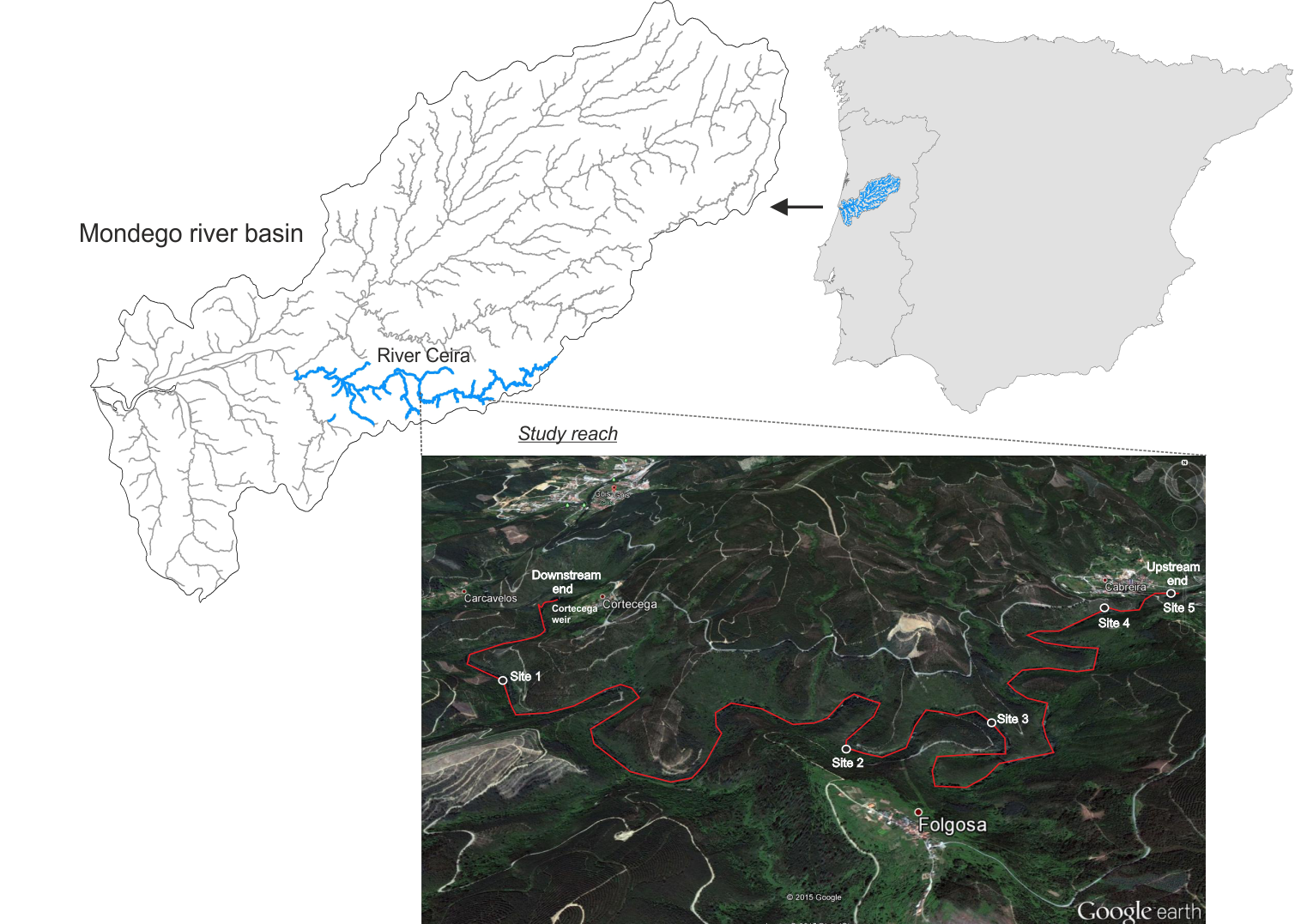 Study reach selected in River Ceira for the restocking actions with glass eels. |
The task included a global assessment of the ecological impacts resulting from the restocking actions with eel individuals in the selected stretch from River Ceira, and in the respective biota, and was developed throughout four specific stages:
- Stage 1) Identification and analysis of the ecological and geomorphological conditions for eel restocking in the selected river stretch;
- Stage 2) Restocking actions with glass eels upstream from Cortecega weir, in River Ceira;
- Stage 3) Analysis of the success of the restocking actions;
- Stage 4) Evaluation of the impact of glass eels introduction and establishment on the macroinvertebrate and fish assemblages of the study area.
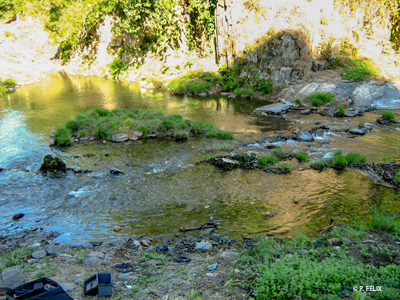 Prospection of habitat conditions. | 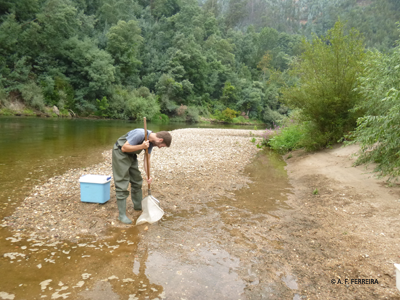 Macroinvertebrates kick sampling. |
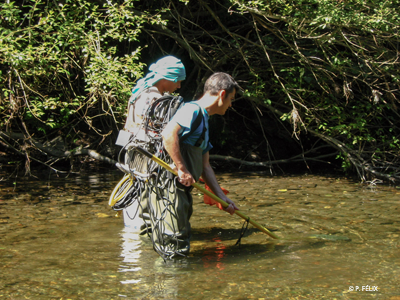 Electrofishing in River Ceira. | 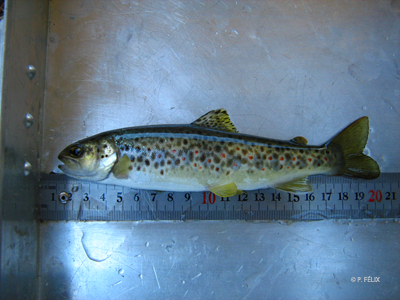 Characterization of fish assemblages. |
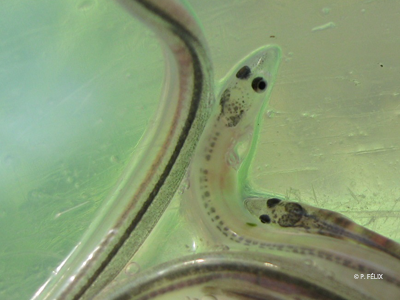 Glass eels. | 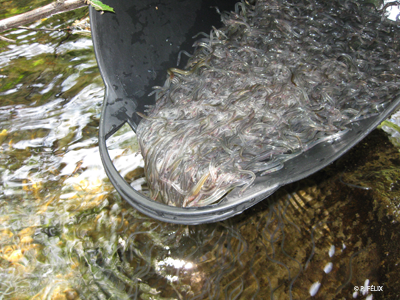 Releasing ca. 60,000 glass eels. |
This pilot action, developed in April 2014, aimed to evaluate the success probabilities, implementation conditions and constraints associated with this type of restocking actions, in order to assess the suitability of its future application as a rehabilitation measure for eel populations affected by the loss of longitudinal connectivity.